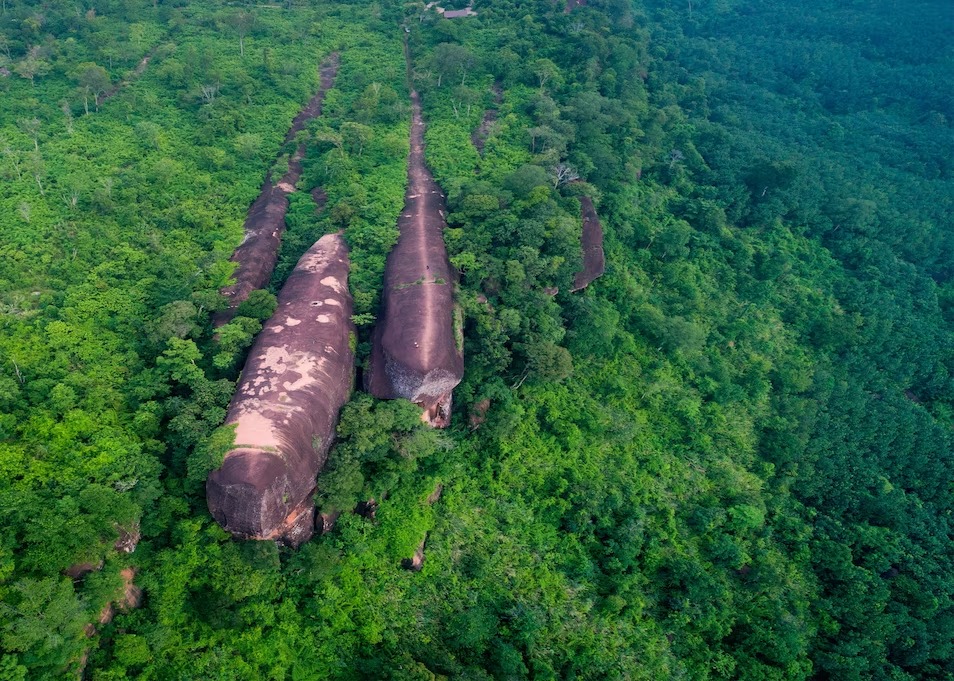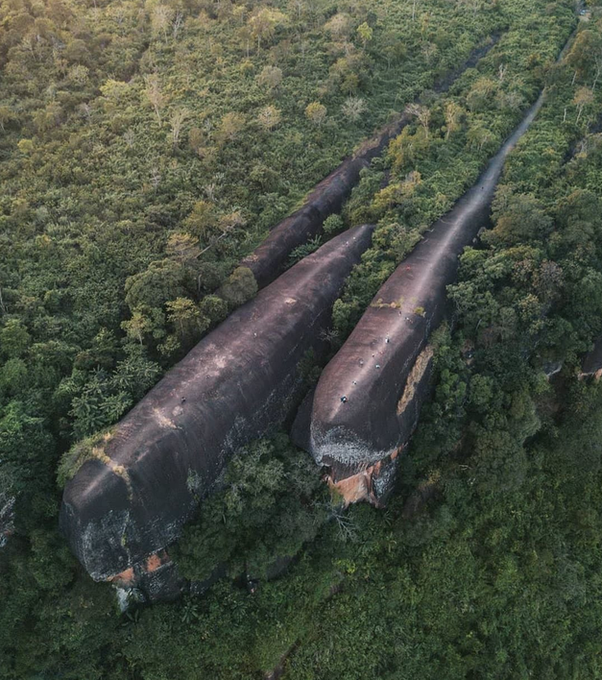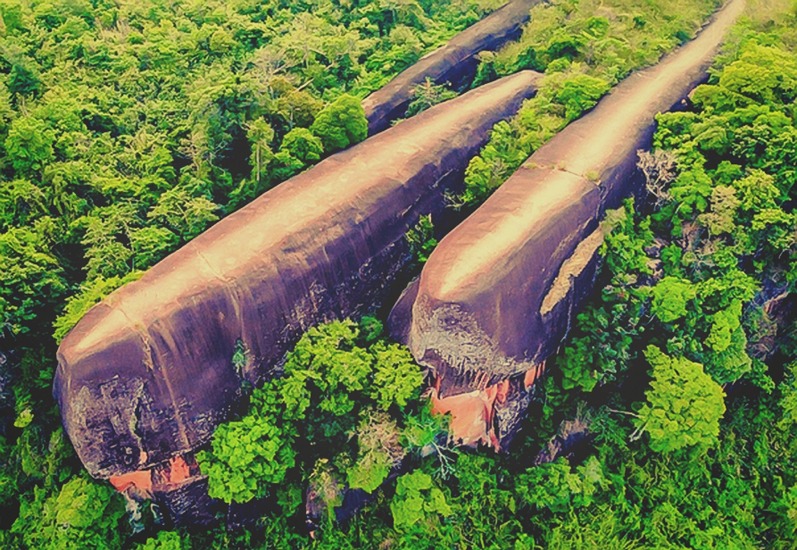
Hin Sam Wan, which means Three Whale Rock, is a 75 million-year-old rock formation jutting majestically near the mountains. It earned its name because it looks like a family of whales. The place is reachable by an extensive network of trails, and a hike to these impressive stones is breathtakingly memorable. Hin Sam Wan rock formation protrudes out of a mountain in Phou Sang, Bueng Kan Province, Thailand, near the Mekong River. Only two of the rocks (the “mother whale” and “father whale”) are accessible by foot, the “baby whale” cannot be reached. Visitors to explore the amazing views and surrounding forests. From the top of Three whale rock Thailand one can see the beaches of the Mekong, the mountains in the Pakkading district of the Lao People’s Democratic Republic, and Phu Wua Forest.


Hin Sam Wan geology
Bueng Kan province is located in the northwest of Thailand, about 750 Kilometres from Bangkok. The province is separated from Laos by the Mekong River and is home to some of the most beautiful landscapes in Thailand. Waterfalls in wild forests, bird sanctuaries and hilltop pagodas are of the best things to see in Thailand.
Its topography features sandstone mountains lying from the North to south directions, known as Three whale Rocks in Thailand. The sandstone mountain was caused by different types of geological changes in the Earth’s crust, which resulted in a variety of natural beauty including rock formations, cliffs, Caves, a cluster of rocks in various shapes, and rock terraces in a widespread area of Phu sang.


Hin Sam Wan is a rock situated in Phu Sang National Park, a large nature reserve that has hot springs, caves, and waterfalls. It is reached through a journey through the park, walking through bamboo forests. In total, there are nine routes that tourists can travel through the park. The place is full of danger with steep cliffs, and it is allowed to go up to the head of two of the whales, the ones known as mom and dad. The smaller rock is too narrow and is not allowed to be climbed. The other attraction is Phu Sang National Park, Elephant Rock. It is a rock shaped like an elephant’s head, which joins other curious formations in the park, among which there is a window and a pool of holes.
Phu Sang National Park
Phu Sang National Park is a national park in Northern Thailand. Phu Sang National Park, with an area of 110 sq miles, is located in one of the north-easternmost mountain chains of the Phi Pan Nam Range, bordering Laos. The sources of many rivers are in these mountains. The park also has caves with stalactites and stalagmites and a warm water waterfall, Namtok Wang Kaew.
Thailand is a country known for both its cultural and natural Splendors. Nearly 34 million people visit the country from abroad every year. Bueng Kan, Thailand’s newest province, is an excellent example of the kind of destination that protects by promoting the 7 Greens location. Located in the northeastern part of Thailand, 751 kilometres away from Bangkok, Bueng Kan is a haven of immersive cultural experiences and staggering natural beauty.



Where is the uncovered mystery about the formation of this geological feature? I can tell from the picture of this formation that the ‘whales’ are up-turned rock strata and between them at one time was another strata of rock less-resistant to weathering and is obviously now, due to rain and perhaps other forces, has worn away.
You sound stupid bitch
Honest. Lucky I just skimmed read it coz I knew this was a heap of shit😂😂 but they got me with this on
I agree completely Michael, I came here for an explanation of these and have been left with more questions than answers guess I’m needing to do my own research into this as never herd of it!